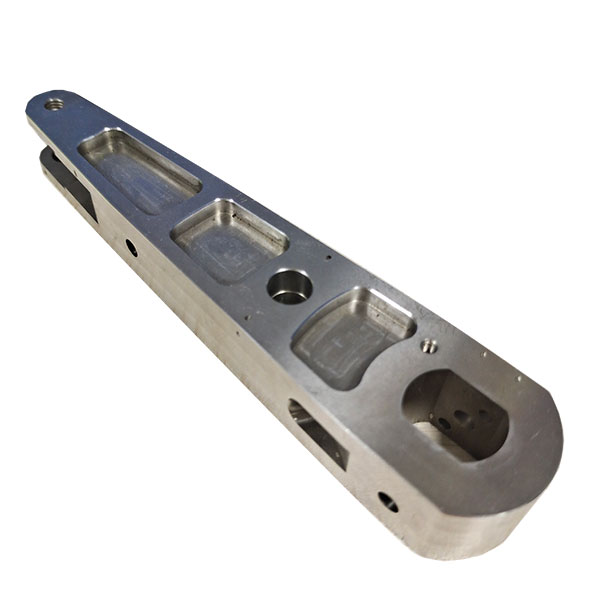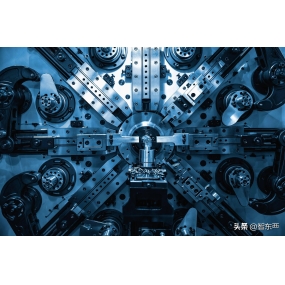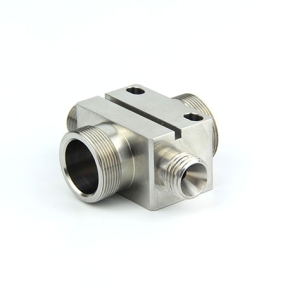Aviation is partibus processionis est procesus complexus et intricate qui multistages et tecnologia specializata sunt. The technical difficulties in the processing of aviation parts are mainly reflected in the following aspects: 1. Material characteristics and material diversity: There are many types of materials used in aviation parts, including aluminum alloys, titanium alloys, high-temperature alloys, and composite materials. Haec materia diversa proprietates physicae et chemiicae habent, quae diversas technicas processionis et equipationes requirunt. Difficult to process materials: Some materials, such as titanium alloys and high-temperature alloys, have high hardness, high cutting force, and poor thermal conductivity, which result in rapid tool wear and high cutting temperatures during the machining process, increasing the difficulty of processing. 2. High precision requirements for complex geometric shapes: Aviation parts typically have complex geometric shapes and strict dimensional accuracy requirements. For example, key components of aircraft engines such as compressors, combustion chambers, and turbines are often shaped as irregular annular structures with poor rigidity, high precision, complex profiles, and difficult machining. Large sized parts: Aircraft fuselage structural components such as beams, frames, ribs, wall panels, etc. have large dimensions and large outline dimensions, belonging to thin-walled multi cavity integral frame structures, with large mechanical cutting removal capacity and high surface quality requirements. 3 , The challenge of machining technology is in controlling cutting force and temperature: effectively controlling cutting force and cutting temperature is a key technical challenge when machining difficult to machine materials. Excessive cutting force and temperature not only lead to increased tool wear, but may also cause deformation of parts and a decrease in surface quality. Eleccio instrumentorum et porta: crucial est eligere instrumentum adequatum pro diversis materialibus et opus processionis. Meanwhile, the issue of tool wear is also a key concern during the machining process. Rapidum instrumentum laborare potest implevere machinationem accuractem et superficiem qualitatem, et etiam ad defectum machinationis. 4 , Strict quality control standards for quality control and testing: Aviation parts have extremely high quality requirements, requiring strict quality control and inspection processes to ensure that each part meets design requirements. This includes multiple stages such as raw material inspection, process monitoring and finished product inspection. Exalta parabola testamenta precision: Ut superprecision qualitatem controlare et probatione attingere, oportet instrumentos et instrumentos mensurae alta precision utilizat, sicut instrumentos mensurae alta precision, microscopes, etc. Haec cogitationes calibrationem et custodientem regulam opus sunt ut accuracionem et fidelitatem possent. 5, Processa nova et optimizatio novorum applicationum tecnologiae: cum progressio technologiae et progressio procedentium, plures et plures novae technologiae in agro processionis partium aviationis appliciuntur. For example, the application of CNC Machining technology, laser machining technology, additive manufacturing technology, etc. provides new ideas and methods for solving traditional machining problems. Optimizatio procedentis: Optimizatio tecnologiae processionis, efficabilitate processionis et qualitate parterum meliora potest. For example, optimizing cutting parameters, improving tool design, and adopting new cooling methods can all reduce machining difficulty and improve machining efficiency to a certain extent.



 English
English Spanish
Spanish Arabic
Arabic French
French Portuguese
Portuguese Belarusian
Belarusian Japanese
Japanese Russian
Russian Malay
Malay Icelandic
Icelandic Bulgarian
Bulgarian Azerbaijani
Azerbaijani Estonian
Estonian Irish
Irish Polish
Polish Persian
Persian Boolean
Boolean Danish
Danish German
German Filipino
Filipino Finnish
Finnish Korean
Korean Dutch
Dutch Galician
Galician Catalan
Catalan Czech
Czech Croatian
Croatian Latvian
Latvian Romanian
Romanian Maltese
Maltese Macedonian
Macedonian Norwegian
Norwegian Swedish
Swedish Serbian
Serbian Slovak
Slovak Slovenian
Slovenian Swahili
Swahili Thai
Thai Turkish
Turkish Welsh
Welsh Urdu
Urdu Ukrainian
Ukrainian Greek
Greek Hungarian
Hungarian Italian
Italian Yiddish
Yiddish Indonesian
Indonesian Vietnamese
Vietnamese Haitian Creole
Haitian Creole Spanish Basque
Spanish Basque








